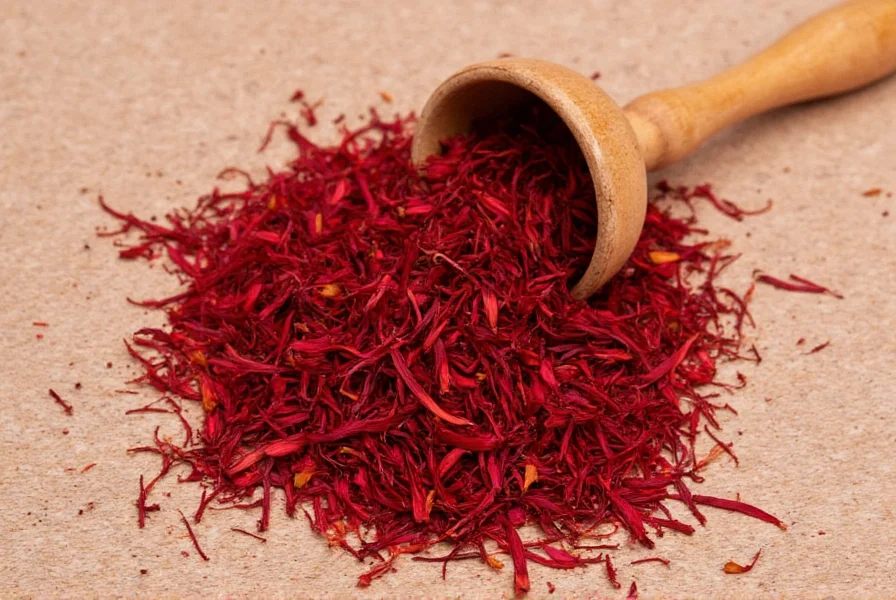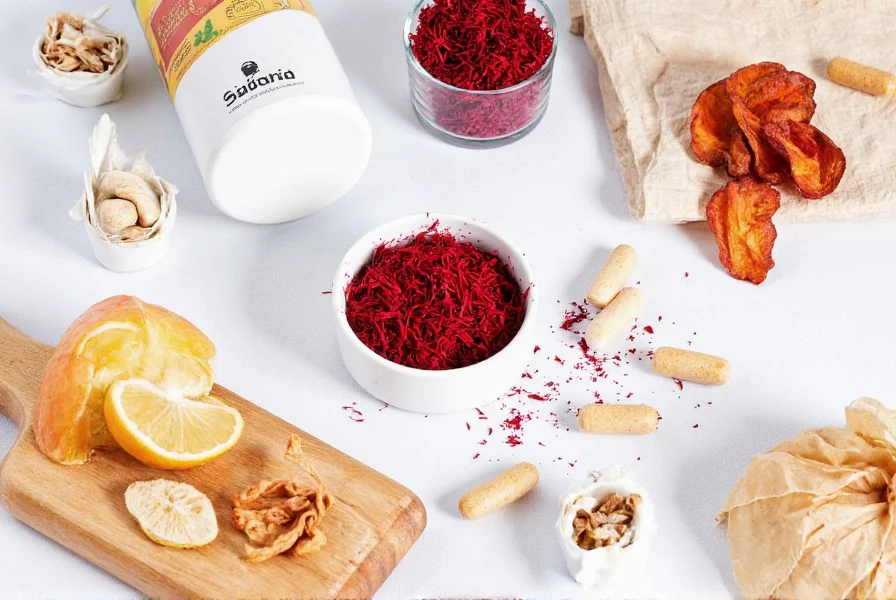Saffron, derived from the Crocus sativus flower stigma, ranks among the world's most expensive spices. Beyond culinary uses, scientific interest has grown in saffron supplements for their potential health benefits. Unlike culinary saffron, supplements provide concentrated extracts with standardized active compounds like crocin and safranal, making therapeutic effects more achievable than through dietary consumption alone.
Scientifically Researched Benefits of Saffron Supplements
Multiple clinical trials have investigated saffron's potential health applications. The most robust evidence supports specific benefits while other areas show promising but preliminary results.
Mood Support and Depression Management
Research demonstrates saffron's potential as a natural mood enhancer. A 2020 meta-analysis in Phytotherapy Research reviewed 10 clinical trials involving 798 participants. The analysis found saffron supplementation (typically 30mg daily of standardized extract) showed comparable effectiveness to conventional antidepressants for mild-to-moderate depression, with fewer reported side effects. Both the petal and stigma components appear effective, suggesting multiple active compounds contribute to these mood-regulating properties.
| Benefit Area | Research Strength | Typical Dosage | Key Compounds |
|---|---|---|---|
| Mood regulation | Strong clinical evidence | 20-50mg/day | Crocin, safranal |
| Eye health | Moderate clinical evidence | 20-30mg/day | Crocin |
| PMS symptom relief | Promising preliminary evidence | 30mg twice daily | Saffron extract |
| Antioxidant activity | Strong laboratory evidence | Varies | Crocetin |
Age-Related Eye Health Protection
Saffron supplements show promise for maintaining retinal function. A 2022 study published in Antioxidants followed participants with early age-related macular degeneration (AMD) taking 20mg daily of saffron extract. After 12 months, researchers observed improved retinal response and visual acuity compared to placebo. Scientists attribute these effects primarily to crocin's antioxidant properties that may protect photoreceptor cells from oxidative damage. While not a treatment for AMD, saffron supplementation appears to support overall retinal health.

Premenstrual Syndrome (PMS) Symptom Management
Women experiencing PMS may find relief through saffron supplementation. A randomized controlled trial in Complementary Therapies in Medicine had participants take 30mg of saffron twice daily during their menstrual cycle. After two cycles, 75% of women reported significant reduction in physical and emotional PMS symptoms compared to 8% in the placebo group. Researchers suggest saffron may influence serotonin pathways, potentially explaining its effectiveness for mood-related PMS symptoms.
Antioxidant and Anti-Inflammatory Properties
Saffron contains potent antioxidants including crocin, crocetin, and safranal. These compounds demonstrate significant free radical scavenging activity in laboratory studies. While human trials are limited, research suggests saffron's antioxidant properties may support cardiovascular health and reduce oxidative stress markers. A 2021 review in Nutrients highlighted saffron's potential role in reducing inflammatory markers like C-reactive protein, though more human studies are needed to confirm these effects at typical supplement doses.
Mechanisms Behind Saffron's Effects
Saffron's benefits stem from its unique chemical composition. The primary active compounds include:
- Crocin - Water-soluble carotenoid responsible for saffron's red color, with strong antioxidant properties
- Safranal - Volatile compound providing aroma, showing neuroprotective effects
- Picrocrocin - Precursor to safranal, contributing to saffron's distinctive taste
These compounds interact with multiple biological pathways. Crocin appears to modulate neurotransmitter systems including serotonin and dopamine, potentially explaining mood benefits. Both crocin and safranal demonstrate anti-inflammatory effects by inhibiting pro-inflammatory cytokines. The compounds also protect cells from oxidative damage through various molecular mechanisms.
Practical Considerations for Saffron Supplementation
Dosage Guidelines Based on Research
Most clinical studies use standardized extracts providing 2-3% safranal and 2-4% crocin. Effective doses vary by application:
- Mood support: 20-50mg daily of standardized extract
- Eye health: 20-30mg daily
- PMS management: 30mg twice daily during luteal phase
Benefits typically appear after 4-8 weeks of consistent use. Higher doses don't necessarily provide additional benefits and may increase risk of side effects.
Safety Profile and Potential Side Effects
Saffron supplements demonstrate good safety at research-backed doses. Most studies report minimal side effects, with some users experiencing mild digestive upset or headaches. The established safe upper limit is 1.5g daily, though therapeutic doses remain well below this threshold. Pregnant women should avoid high-dose saffron supplementation due to potential uterine stimulation effects. Individuals taking antidepressants should consult healthcare providers before combining with saffron due to potential serotonin interactions.

Quality Considerations When Choosing Supplements
Not all saffron supplements deliver equal benefits. Look for products that:
- Specify crocin and safranal content (typically 2-4% and 2-3% respectively)
- Include third-party testing verification
- Use extracts from Crocus sativus stigma (not petals or substitutes)
- Provide clear dosage information
Avoid products making exaggerated health claims or promising immediate results. Reputable manufacturers transparently disclose their testing methods and compound concentrations.
Limitations of Current Research
While promising, saffron supplement research has limitations. Many studies have small sample sizes and short durations. Most research focuses on specific standardized extracts, making it difficult to generalize findings to all saffron products. Additionally, long-term safety data remains limited. Saffron supplements should complement, not replace, conventional treatments for medical conditions. More large-scale, long-term studies are needed to fully understand saffron's therapeutic potential and optimal usage protocols.
Conclusion
Saffron supplements offer several evidence-supported benefits, particularly for mood regulation, eye health, and PMS symptom management. The research-backed benefits of saffron supplements demonstrate potential as a complementary approach to wellness. While not a miracle cure, standardized saffron extracts provide a natural option for those seeking evidence-based supplementation. As with any supplement, consult healthcare professionals before starting saffron, especially if managing health conditions or taking medications. Future research will likely refine our understanding of optimal dosing, long-term effects, and additional potential applications for this ancient spice in modern wellness practices.











 浙公网安备
33010002000092号
浙公网安备
33010002000092号 浙B2-20120091-4
浙B2-20120091-4